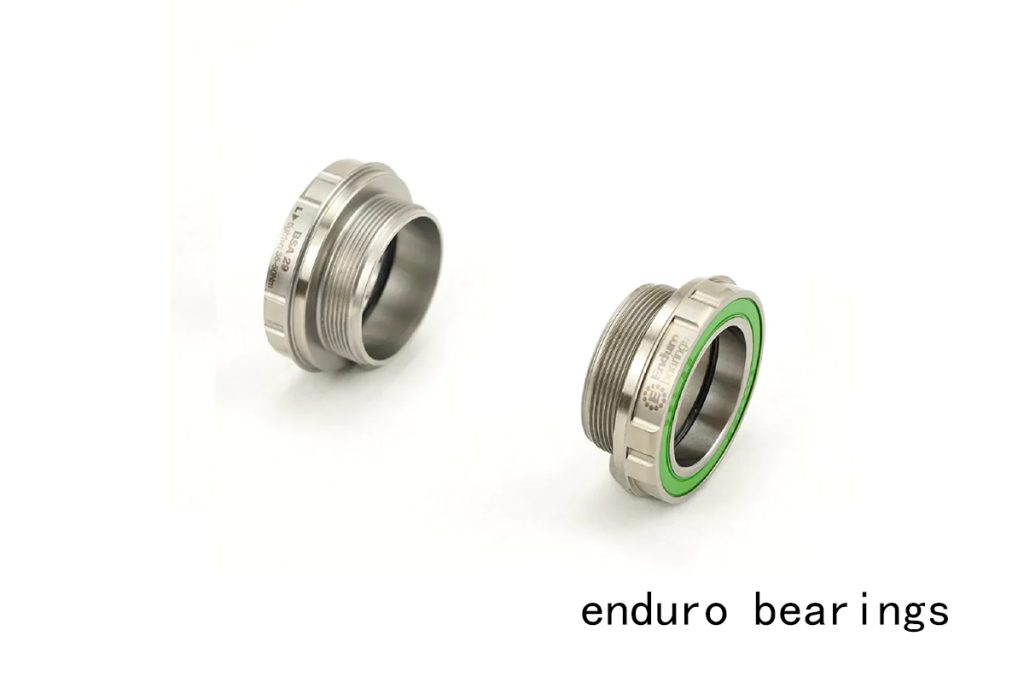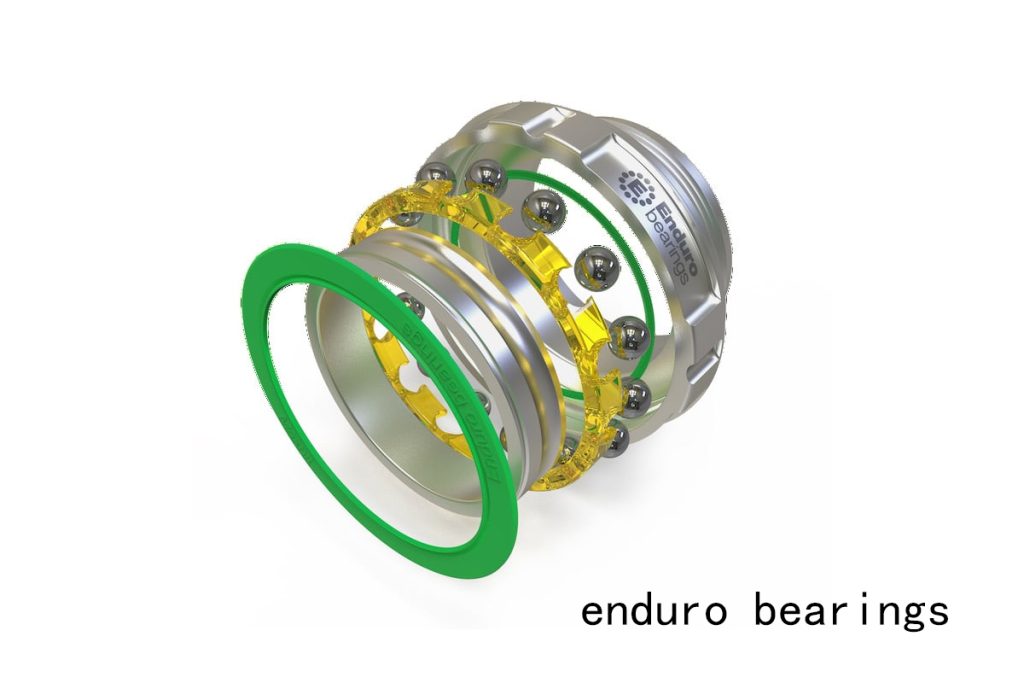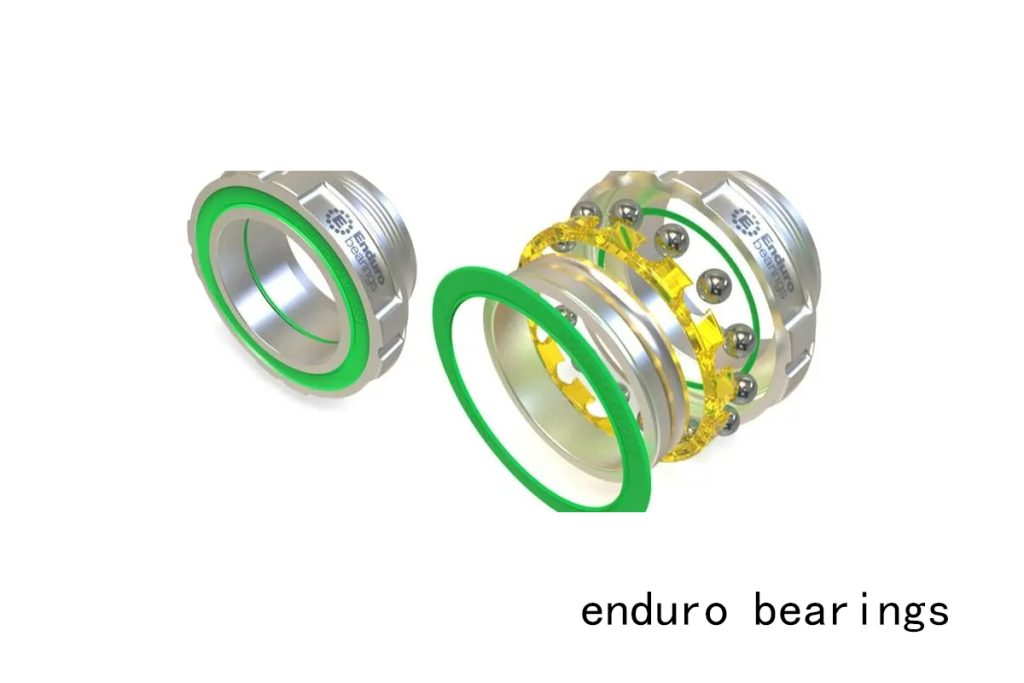Introduction
Overview of Enduro Bearings and their significance in various industries
Enduro Bearings, renowned for their durability and precision, play a pivotal role across a spectrum of industries. These bearings are engineered to withstand high loads, extreme temperatures, and demanding environmental conditions, making them indispensable components in machinery ranging from automotive to aerospace sectors. Their ability to minimize friction while maximizing efficiency has positioned Enduro Bearings as a cornerstone of modern mechanical systems.
exploring the history, uses, and innovations of Enduro Bearings
An in-depth look at the full evolution of Enduro bearings, tracing their origins from their inception to their current position as a leader in the bearing industry. Furthermore, it examines the diverse applications that leverage Enduro Bearings’ robust design and explores the cutting-edge innovations that continually redefine performance standards. Through this exploration, readers will gain insights into how Enduro Bearings have shaped technological advancements and enhanced operational efficiencies across global markets.
History of Enduro Bearings
Early development and invention of Enduro Bearings
Enduro Bearings emerged in the mid-20th century as a response to the growing demand for durable and efficient bearing solutions in industrial applications. The early prototypes of Enduro Bearings were developed with a focus on enhancing load-bearing capacity and minimizing friction, addressing critical challenges faced by various industries such as manufacturing, automotive, and aerospace.
Key milestones in the evolution of Enduro Bearings
Throughout its history, Enduro Bearings has achieved significant milestones that have shaped the industry’s standards and practices. These milestones include breakthroughs in material science, advancements in manufacturing processes, and innovations in bearing design. Each milestone marked a leap forward in performance, reliability, and longevity, solidifying Enduro Bearings’ reputation as a leader in the global bearing market.
Influential figures and companies in the history of Enduro Bearings
Several pioneering figures and companies have played pivotal roles in the development and dissemination of Enduro Bearings technology. From visionary engineers who conceptualized groundbreaking designs to industry-leading manufacturers that scaled production capabilities, these influencers have collectively propelled Enduro Bearings into a position of prominence within the broader mechanical engineering landscape.
Functional Uses of Enduro Bearings
Common Applications of Enduro Bearings in Different Industries
Enduro Bearings, renowned for their durability and precision engineering, find extensive application across various industries globally. These bearings are engineered to withstand high loads, operate efficiently under diverse conditions, and require minimal maintenance. Here are some common industries where Enduro Bearings are widely utilized:
Automotive Industry: In automotive applications, Enduro Bearings are integral components in engines, transmissions, wheel hubs, and steering systems. Their ability to handle high rotational speeds and heavy loads ensures reliable performance and longevity in vehicles.
Aerospace and Aviation: Enduro Bearings play a crucial role in aerospace applications, supporting critical components such as landing gear systems, flight control surfaces, and engine mounts. Their lightweight construction and ability to operate in extreme temperatures and conditions make them ideal for aircraft.

Industrial Manufacturing: Within industrial manufacturing settings, Enduro Bearings are used in machinery such as conveyor systems, robotics, and processing equipment. Their high load capacity and resistance to wear ensure smooth operation and extended service life in demanding production environments.
Medical Equipment: Enduro Bearings contribute to the precision and reliability of medical devices, including surgical tools, imaging equipment, and patient monitoring systems. Their smooth operation and low friction characteristics are essential for maintaining accuracy and performance in healthcare settings.
Specific Examples of How Enduro Bearings are Used in Machinery and Equipment
Conveyor Systems: Enduro Bearings support conveyor rollers, ensuring smooth material handling in industries ranging from mining to food processing. Their robust design and ability to handle continuous operation make them indispensable for maintaining productivity and reducing downtime.
Robotics: In robotic applications, Enduro Bearings are used in joints, actuators, and other moving components. Their high precision and low friction properties enable precise movement control and enhance the overall efficiency and reliability of robotic systems.
Wind Turbines: Within renewable energy sectors, Enduro Bearings are critical in wind turbine generators and pitch systems. They withstand the dynamic loads and harsh environmental conditions encountered in wind energy production, contributing to the operational reliability and longevity of turbines.
Benefits of Using Enduro Bearings in These Applications
| Industry | Applications | Benefits |
| Automotive | Engines, transmissions, wheel hubs, steering systems | High load capacity, reliable performance under high speeds and heavy loads |
| Aerospace and Aviation | Landing gear systems, flight control surfaces, engine mounts | Lightweight, operational reliability in extreme temperatures and conditions |
| Industrial Manufacturing | Conveyor systems, robotics, processing equipment | Extended service life, smooth operation under demanding conditions |
| Medical Equipment | Surgical tools, imaging equipment, patient monitoring systems | Precision, low friction operation essential for accuracy and reliability |
| Renewable Energy (Wind) | Wind turbine generators, pitch systems | Endurance under dynamic loads and harsh environmental conditions |
Highlights the diverse functional uses of Enduro Bearings across key industries, underscoring their role in enhancing performance, reliability, and operational efficiency.
Technological Innovations in Enduro Bearings
Recent Advancements in Enduro Bearing Materials and Design
Enduro Bearings have undergone significant advancements in materials and design, enhancing their performance across various applications. Key innovations include:
Advanced Composite Materials: Recent developments in composite materials have allowed Enduro Bearings to achieve higher strength-to-weight ratios and improved resistance to corrosion and wear. Materials such as ceramic composites and advanced polymers are increasingly used to optimize bearing performance in challenging environments.
Nano-coatings and Surface Treatments: Nano-coatings and surface treatments have revolutionized Enduro Bearings by providing enhanced lubricity, reduced friction, and increased resistance to contaminants. These treatments extend bearing life and improve operational efficiency in critical applications.
Integrated Sealing Solutions: Innovations in sealing technologies have focused on minimizing lubricant leakage and ingress of contaminants into the bearing assembly. Integrated sealing solutions, including labyrinth seals and advanced elastomeric seals, ensure superior protection and reliability in harsh operating conditions.

Cutting-edge Manufacturing Techniques for Enduro Bearings
Modern manufacturing techniques have played a pivotal role in enhancing the precision and reliability of Enduro Bearings:
Precision Machining: Advances in computer numerical control (CNC) machining have enabled the production of bearings with tighter tolerances and smoother surfaces. This ensures consistent performance and reduces vibration and noise during operation.
Additive Manufacturing (3D Printing): The adoption of additive manufacturing techniques has facilitated the rapid prototyping and customization of Enduro Bearings. This technology allows for complex geometries and optimized internal structures, leading to improved load-bearing capacity and operational efficiency.
Automated Assembly Processes: Automated assembly lines equipped with robotics and advanced quality control systems ensure the precise alignment and integration of bearing components. This minimizes human error and enhances the reliability and uniformity of Enduro Bearings.
Innovations Enhancing the Performance and Longevity of Enduro Bearings
Recent innovations have focused on optimizing bearing performance and extending service life:
High-Performance Lubricants: Advances in lubrication technology have introduced high-performance synthetic lubricants tailored to the specific operating conditions of Enduro Bearings. These lubricants reduce frictional losses, improve wear resistance, and extend maintenance intervals.
Enhanced Bearing Geometry: Optimization of bearing geometries, including raceway profiles and ball or roller configurations, has improved load distribution and contact stresses. This results in reduced wear rates and increased load-carrying capacity, enhancing overall bearing performance.
IoT Integration and Condition Monitoring: Integration of Internet of Things (IoT) sensors allows real-time monitoring of bearing conditions such as temperature, vibration, and lubricant quality. Predictive maintenance algorithms based on data analytics help prevent unexpected failures and optimize maintenance schedules.
Comparative Analysis of Traditional vs. Modern Enduro Bearings
Differences Between Early Enduro Bearings and Contemporary Models
Enduro Bearings have evolved significantly from their early iterations to modern versions, incorporating advanced technologies and materials:
Material Composition: Early Enduro Bearings typically used conventional steel alloys for their construction. Modern bearings, however, leverage advanced materials such as ceramic composites and high-performance polymers. These materials offer superior strength, corrosion resistance, and reduced friction characteristics compared to traditional steel bearings.
Design and Construction: Traditional Enduro Bearings often featured simpler designs with standard ball or roller configurations. Modern bearings are engineered with optimized geometries, including advanced raceway profiles and integrated sealing solutions. This design evolution enhances load distribution, reduces wear, and improves overall operational efficiency.
Improvements in Performance, Durability, and Efficiency
The transition from traditional to modern Enduro Bearings has brought about significant improvements across key performance metrics:
| Advancements | Benefits |
| Enhanced Load Capacity | Capable of supporting higher loads and operating at increased speeds |
| Greater reliability and extended service life in demanding industrial applications | |
| Reduced Friction and Energy Losses | Minimized frictional losses |
| Improved energy efficiency and operational smoothness | |
| Reduced maintenance requirements | |
| Extended Maintenance Intervals | Longer maintenance intervals |
| Improved wear resistance and robust sealing mechanisms | |
| Reduced downtime and lower lifecycle costs |
Case Studies Showcasing the Impact of Innovations on Enduro Bearings’ Applications
Automotive Industry Case Study: A comparison between traditional and modern Enduro Bearings in automotive applications reveals a significant increase in reliability and performance. Modern bearings contribute to improved fuel efficiency and reduced emissions through enhanced rotational efficiency and durability.
Industrial Machinery Example: In industrial machinery, the adoption of modern Enduro Bearings has resulted in higher productivity and operational uptime. Case studies demonstrate how advanced bearing materials and designs have enabled manufacturers to achieve higher throughput and operational efficiency.
Aerospace Sector Analysis: The aerospace industry showcases how modern Enduro Bearings support critical components in aircraft engines and landing gear systems. Case studies highlight the reliability and safety improvements achieved through advanced bearing technologies, ensuring aircraft performance under extreme conditions.

Future Trends and Developments
Predicted Trends in the Enduro Bearings Market
The future of Enduro Bearings is poised for dynamic growth and innovation, driven by several key trends:
Increased Demand for High-Performance Bearings: As industries continue to prioritize efficiency and reliability, there will be a rising demand for Enduro Bearings capable of handling higher loads, speeds, and environmental conditions.
Shift Towards Lightweight and Sustainable Materials: Future Enduro Bearings are likely to incorporate advanced lightweight materials such as carbon fiber composites and bio-based polymers. These materials offer reduced weight, improved energy efficiency, and enhanced sustainability compared to traditional alloys.
Integration of IoT and Smart Bearing Technologies: The integration of Internet of Things (IoT) sensors into Enduro Bearings will enable real-time monitoring of performance metrics such as temperature, vibration, and lubrication status. Predictive maintenance algorithms will optimize operational efficiency and minimize downtime.
Emerging Technologies and Their Potential Impact on Enduro Bearings
| Technological Advancements | Expected Benefits |
| Nanotechnology in Bearing Surfaces | Reduced friction, enhanced wear resistance, improved efficiency |
| Extended bearing life, lower maintenance costs | |
| 3D Printing for Customization and Prototyping | Complex geometries, customized designs |
| Rapid prototyping, accelerated innovation, shorter time-to-market for new bearing solutions | |
| Advanced Lubrication Solutions | Optimized friction management, extended maintenance intervals |
| Increased reliability, enhanced performance |
Future Applications and Growth Opportunities for Enduro Bearings
Renewable Energy Sector: Enduro Bearings will play a crucial role in wind turbines, solar tracking systems, and tidal energy converters. These applications require bearings capable of withstanding environmental stresses while maximizing energy conversion efficiency.
Electric Vehicles (EVs) and Autonomous Systems: The transition towards electric mobility and autonomous technologies will drive demand for Enduro Bearings with minimal frictional losses and high reliability. Bearings optimized for EV drivetrains and robotic systems will facilitate smoother operation and improved vehicle performance.
Healthcare and Biomedical Devices: Enduro Bearings will continue to support advancements in medical robotics, prosthetics, and surgical equipment. Bearings with sterile coatings and precision performance characteristics will ensure safe and reliable operation in healthcare environments.
Explores the future trends and developments in the Enduro Bearings market, highlighting anticipated technological advancements, emerging applications, and growth opportunities. These insights underscore the ongoing evolution of Enduro Bearings as integral components across diverse industries, paving the way for enhanced performance, efficiency, and sustainability in future applications.
Conclusion
Recap of the History, Uses, and Innovations of Enduro Bearings
Throughout its history, Enduro Bearings have evolved from basic mechanical components to sophisticated precision instruments. Initially designed to reduce friction and facilitate smooth rotation in machinery, these bearings have become indispensable across various industries.
Origin and Evolution: Enduro Bearings originated from the need to improve efficiency and reliability in mechanical systems. Over time, advancements in materials, design, and manufacturing techniques have enhanced their performance capabilities.
Functional Uses: Enduro Bearings are widely used in automotive, aerospace, industrial machinery, and medical equipment. Their ability to withstand heavy loads, high speeds, and harsh environments makes them critical components in modern engineering applications.
Technological Innovations: Innovations such as advanced materials (e.g., ceramics, polymers), precision manufacturing (e.g., CNC machining, additive manufacturing), and smart bearing technologies (e.g., IoT integration, predictive maintenance) have propelled Enduro Bearings to new levels of efficiency and durability.
Importance of Continuous Innovation in the Bearing Industry
Continuous innovation is paramount in the bearing industry to meet evolving technological demands and customer expectations:
Performance Optimization: Innovations in bearing design and materials contribute to improved performance metrics such as load capacity, friction reduction, and operational lifespan.
Environmental Adaptability: Bearings must adapt to increasingly stringent environmental regulations and operational conditions. Innovations in sealing technologies and lubrication systems ensure bearings operate efficiently in diverse climates and applications.
Market Competitiveness: The ability to innovate allows bearing manufacturers to differentiate themselves in a competitive market. Innovations that enhance reliability, reduce maintenance costs, and improve sustainability attract customers seeking long-term value.
Final Thoughts on the Future of Enduro Bearings and Their Role in Modern Engineering
Looking ahead, Enduro Bearings are poised to play a pivotal role in advancing modern engineering across global industries:
Future Applications: Emerging sectors such as renewable energy, electric mobility, and robotics present new opportunities for Enduro Bearings. Tailored solutions that optimize energy efficiency and reliability will drive adoption in these growth markets.
Technological Integration: Integration with emerging technologies like artificial intelligence (AI) and machine learning will further enhance bearing performance and operational predictability. Smart bearings capable of self-monitoring and adapting to dynamic conditions will redefine industrial maintenance practices.
Global Impact: Enduro Bearings contribute to sustainability initiatives by improving energy efficiency and reducing carbon footprints in industrial operations worldwide.
In conclusion, Enduro Bearings continue to evolve as essential components in modern engineering, driven by innovation and technological advancements. Their history of reliability, functional versatility, and commitment to continuous improvement ensures they remain at the forefront of the bearing industry.

